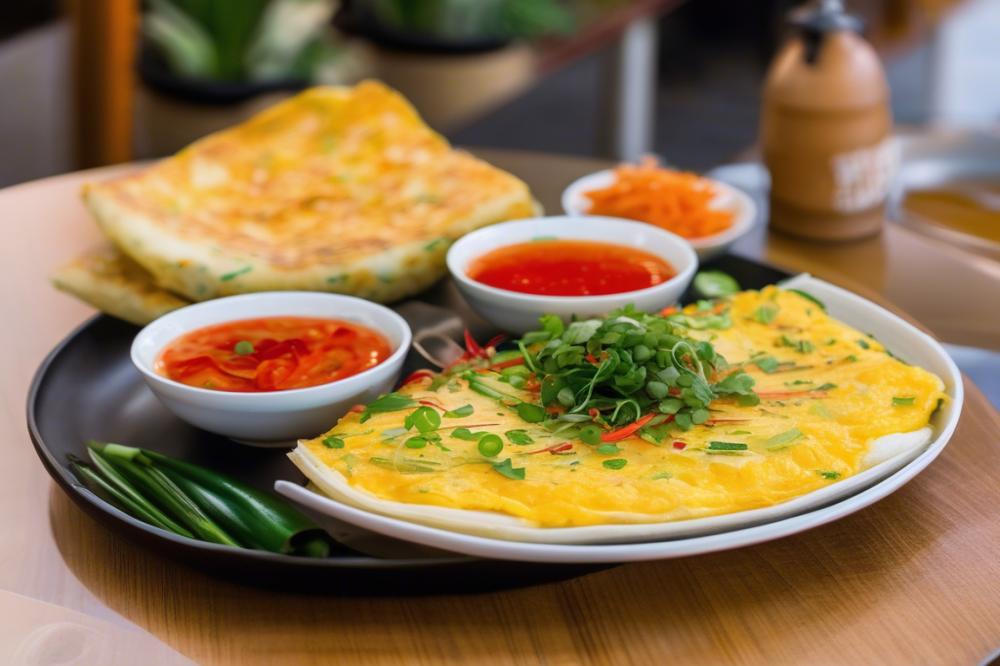Overview of Thai cuisine and Its Significance
Thai cuisine is a colorful tapestry of flavors, textures, and aromas. It plays a vital role in the country’s heritage. Known for its bold spices and fresh ingredients, the food tells stories of cultural influences from neighboring regions. Dishes often balance sweet, sour, salty, and spicy elements, creating a unique symphony for the palate. street food captures this essence perfectly, allowing locals and visitors to enjoy quick, flavorful bites on the go. In Thailand, meals are a social experience, reflective of a vibrant food culture that highlights community and hospitality.
Kai Jeow: A Beloved Thai Omelette
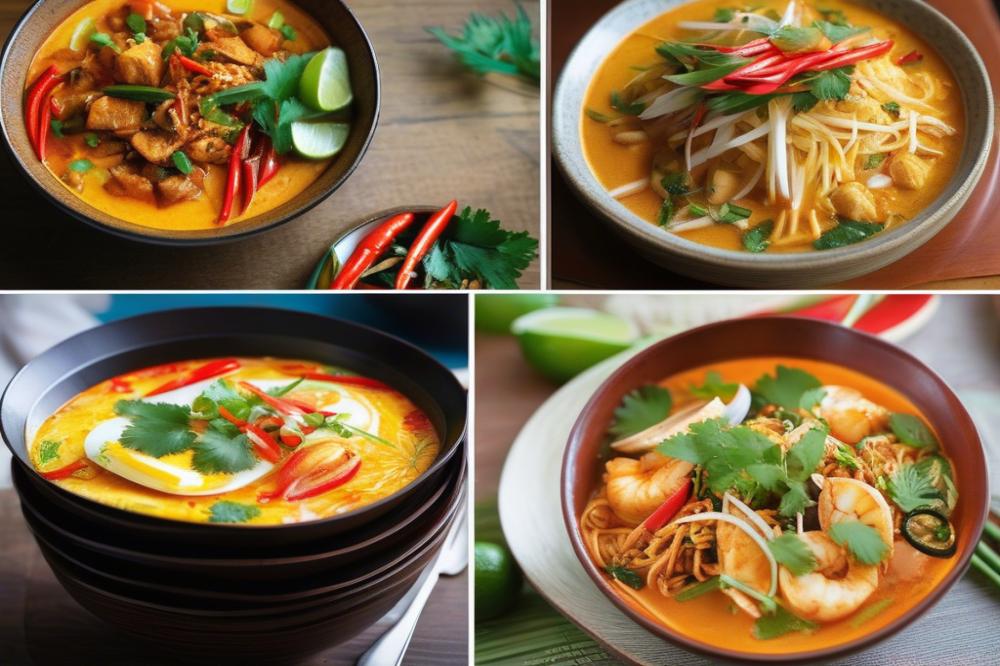
One particular dish that stands out among the rest is the Kai Jeow. This dish showcases the skillful use of eggs, a staple ingredient in many Thai recipes. It is not just an ordinary omelette; it’s a beloved dish that many people regard as a quintessential part of their diet. Street vendors whip up this classic delight quickly, making it ideal for breakfast. Often garnished with green onions and served with hot sauce, the dish is both satisfying and comforting. Prepared with various cooking techniques, the versatility of Kai Jeow appeals to a wide audience.
Importance of street food in Thai Culture
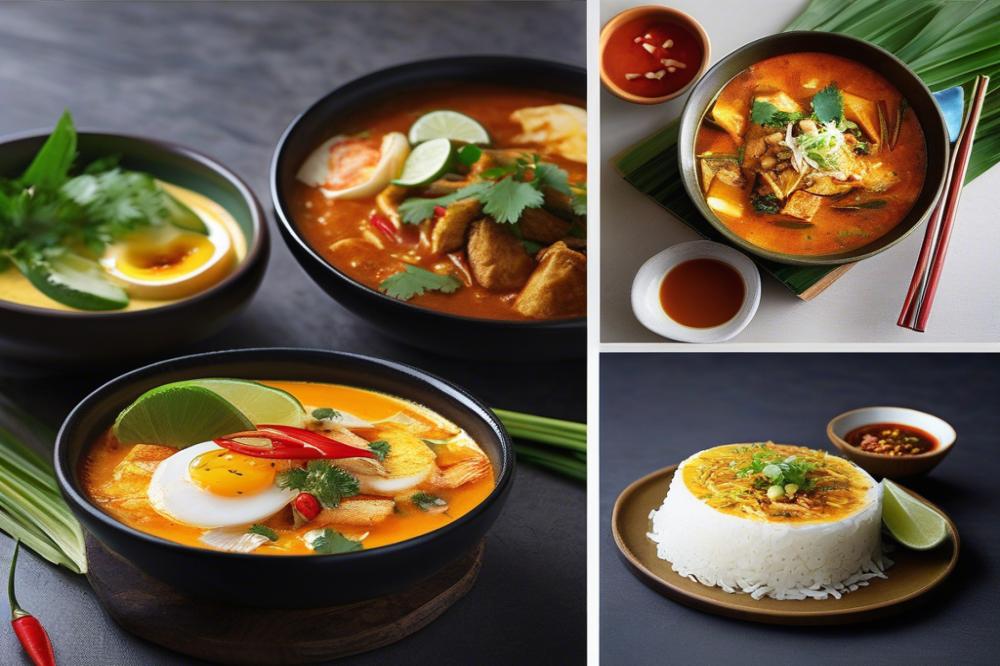
Street food plays a crucial role in the everyday lives of many Thais. Vendors line the bustling streets, offering quick meals that satisfy every craving. This accessible food option allows people to enjoy great dishes without breaking the bank. The lively atmosphere around street stalls fosters a sense of community, drawing people together over shared meals. Traditional favorites, like Kai Jeow, embody the spirit of Thai food culture, emphasizing convenience and flavor. Whether it’s breakfast or a late-night snack, these street treats are woven into the fabric of Thai life.
Thai Omelette: A Street Food Classic
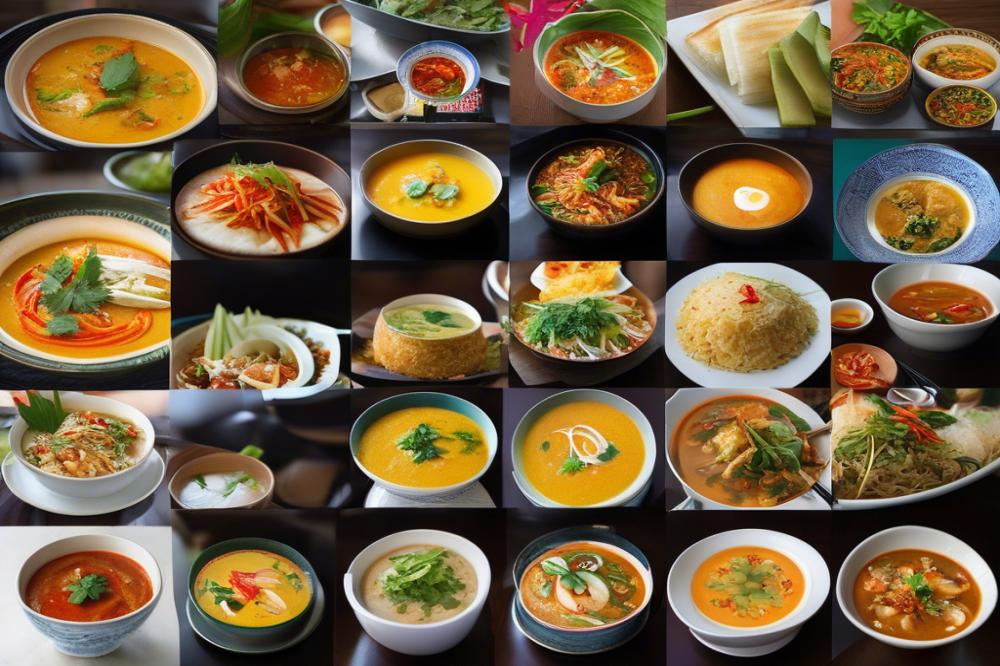
At street vendors in Thailand, the omelette is a well-loved staple. Made with fresh eggs, it is often cooked quickly over high heat. This dish features a beautiful golden hue and a fluffy texture. Street vendors skillfully whip up these flavorful dishes, combining eggs with various ingredients. Common additions include onions, green chilies, and often some soy sauce. Serving it hot over rice makes for a satisfying meal or snack.
Comparing the Thai omelette to other omelette versions around the world reveals fascinating differences. Most cuisines offer their own take on this egg-based dish. For instance, the French omelette is known for its delicate, creamy inside. In contrast, the Spanish tortilla is thicker, often filled with potatoes and onions. These variations showcase the diverse ways eggs can be prepared. Each recipe offers a peek into its culture’s cooking techniques.
Kai Jeow is a vital part of Thai breakfast culture. This versatile dish serves as a quick meal for busy mornings or late-night snacks. Many locals enjoy it, demonstrating how food fits into daily life. Quick, satisfying, and easy to customize, the omelette meets many tastes. In Thailand, it forms a bridge in the food culture. People can enjoy street food at all hours, making it an accessible choice for everyone.
Ingredients and Cooking Instructions
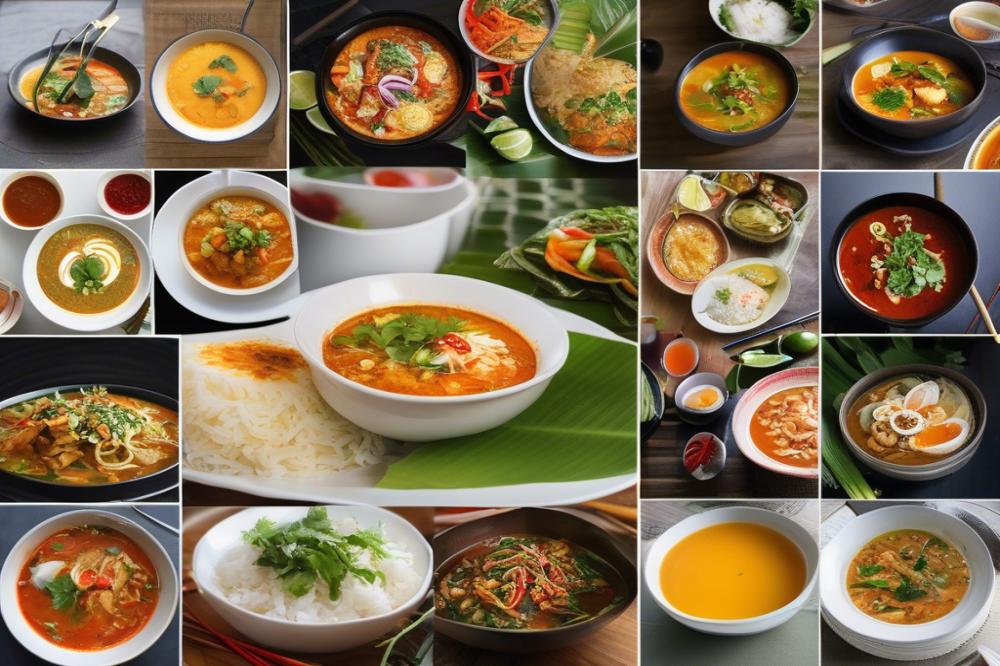
List of ingredients for a basic Kai Jeow
Making a Kai Jeow requires just a few simple ingredients. Start with eggs; they are the heart of this dish. Fish sauce adds that signature salty taste that is a hallmark of Thai cuisine. A dash of white pepper brings warmth and depth. Chopped green onions provide a fresh crunch that complements the eggs beautifully. If you’d like, you can include minced pork, shrimp, or a mix of vegetables for extra flavor and nutrition. These optional ingredients make it versatile for different preferences.
Step-by-step cooking instructions
To begin, crack four eggs into a bowl. Whisk them well with a pinch of fish sauce and a sprinkle of white pepper. If you’re using any meat or vegetables, mix them in now. Heat a small amount of oil in a pan over medium heat. When the oil shimmers, pour in the egg mixture. Allow the omelette to cook undisturbed for a few minutes until the edges set. Gently lift the edges with a spatula to let the uncooked eggs flow to the bottom. Once the center is nearly firm, use the spatula to fold it in half. Cook for another minute or so. Slide it onto a plate when it reaches your desired doneness. This creates a delightful fluffy texture.
Tips for achieving the perfect texture and flavor
To achieve the best results, focus on the temperature of your pan. A well-heated pan helps the eggs cook evenly. Avoid overcooking; a softer center keeps it moist. If the texture is too tough, decrease the heat next time. For extra flavor, consider adding herbs, such as cilantro or basil, before serving. Street vendors in Thailand often master this dish, so observe their techniques if possible. Serve your omelette hot with rice or as part of a larger breakfast spread. Simple touches can elevate your experience, making it a top choice among quick meals.
Nutritional Information
The Kai Jeow, or Thai omelette, is an iconic street food favored for its taste and quick preparation. Each ingredient in this delicious dish contributes to its nutritional profile. Eggs serve as the primary ingredient, offering a rich source of protein, healthy fats, and vitamins like B12 and D. They provide energy and promote muscle health. Adding bamboo shoots or scallions enhances the fiber content, which aids digestion. The use of fish sauce not only adds depth of flavor but also includes trace amounts of essential minerals.
Health benefits are abundant in eggs. They support eye health due to the presence of lutein and zeaxanthin. These nutrients reduce the risk of age-related eye diseases. Furthermore, they play a role in brain development and overall cognitive function. A well-balanced Thai breakfast often includes this dish, showcasing the importance of protein in starting the day right. Eggs can help maintain satiety, which is crucial for those on the go. Street vendors whip up this hearty meal quickly, making it an ideal choice for busy individuals.
Within the realm of Thai cuisine, balanced nutrition is a priority. Street food typically includes a medley of flavors and ingredients that cover various food groups. The Kai Jeow exemplifies this by combining protein from eggs, vegetables for vitamins and minerals, and the savory taste of sauces. These quick meals are not just filling but can also provide key nutrients. Many people appreciate how flavorful dishes can fit into their everyday diet while still promoting health.
Street food culture centers around accessibility and variety. The Kai Jeow stands out, often paired with rice to create a complete meal. This combination promotes a balanced intake of macronutrients. Street vendors take pride in their cooking techniques, often honing their skills to perfect this dish. Traditional recipes may vary from region to region, offering a glimpse into local tastes. Such diversity in food reflects the rich culinary heritage that influences everyday eating habits in Thailand.
Cooking Techniques in Thai Street Food
Street vendors in Thailand use traditional methods to prepare their dishes. These techniques are essential in creating a flavorful Thai breakfast. A wok is often the star of the kitchen. High heat is crucial when making an omelette. This intense cooking method helps seal in the flavors.
Wok skills are not just good but vital for success. Experienced cooks flick their wrists, creating a beautiful omelette that is soft on the inside and slightly crispy outside. Eggs cook quickly in a hot wok. This rapid cooking captures the fresh taste of ingredients.
Recipes vary from vendor to vendor, reflecting personal styles and local influences. Different herbs and spices can change a dish entirely, showcasing the rich food culture found in Thai cuisine. Each street vendor holds the power of flavor in their hands, mastering the art of cooking through practice. Techniques are passed down through generations, preserving tastes that define the community.
Cooking on the streets of Thailand is more than just making quick meals; it is about sharing heritage. Traditional methods help maintain a connection to the past. When locals and tourists enjoy these flavorful dishes, they experience a piece of Thai history. Every bite tells a story, drawing people into the unique culinary scene.
The Influence of Street Food Culture on Thai Omelette
The street food scene in Thailand is lively and vibrant. Street vendors can be found throughout the country, serving delicious meals to locals and tourists alike. They often operate out of small carts or stalls, ready to whip up quick meals for anyone who stops by. This ease of access makes street food a core part of Thai cuisine.
A big part of the street food culture is innovation. Street vendors take traditional recipes and add their personal touch. They might mix in different ingredients or try new cooking techniques. These creative twists not only attract customers but also keep the dishes exciting. The Thai omelette becomes something new each time you try it.
Breakfast is usually quick in Thailand, making street food a popular go-to option. Locals often grab a meal while on the move. An omelette made with eggs and various add-ins can warm you up in the morning. Vendors have perfected the art of making flavorful dishes that are ideal for breakfast or any time of day.
The connection between street food and Thai food culture is strong. Dining on the street is not just about the food; it’s about the experience. Vendors share stories with customers and create a sense of community. Eating at a street stall has a social aspect that is woven into the fabric of daily life in Thailand.
This culture encourages exploration. Many people enjoy wandering through street markets, tasting different foods from various vendors. Each bite offers a glimpse into the heart of Thai life. A simple dish like an omelette can tell a bigger story about traditions and the creativity of the people who prepare it.
With each meal, the flavors and techniques come together in harmony. Street food is a dynamic force within the country. Every plate serves as a reminder of how essential these quick meals have become in shaping Thai cuisine. The future of dishes like the omelette continues to evolve with the ever-changing street food landscape.
A Tasty Farewell: Embracing the Flavors of Kai Jeow
Throughout this article, we have explored the importance of the Thai omelette Kai Jeow in the culinary landscape. This dish represents more than just a meal; it embodies the spirit of Thai cuisine. The combination of simple ingredients, local spices, and meticulous cooking techniques makes it a beloved choice for many. Street food has long been a centerpiece of Thailand’s vibrant food culture, and this omelette is a perfect example of how such dishes bring people together.
Consider trying to make this delight in your own kitchen. With just a few ingredients—eggs, fish sauce, and scallions—you can recreate a taste of Thailand. However, the experience of enjoying Kai Jeow from a bustling street vendor is unmatched. The energy, the sizzling sounds, and the irresistible aromas all contribute to a memorable dining experience. Trying it from a local vendor can provide a hint of authenticity that home cooking might not capture.
Street food plays a crucial role in allowing people to enjoy true flavors. It connects you to both the community and the culture. Each bite brings forth a story of tradition and artistry in cooking. In trying this dish, whether at home or from a street stall, you partake in a rich legacy of flavor and culinary love. The Thai omelette, in all its simplicity, is a window into the heart of Thailand. Take the plunge and enjoy this delicious classic.

